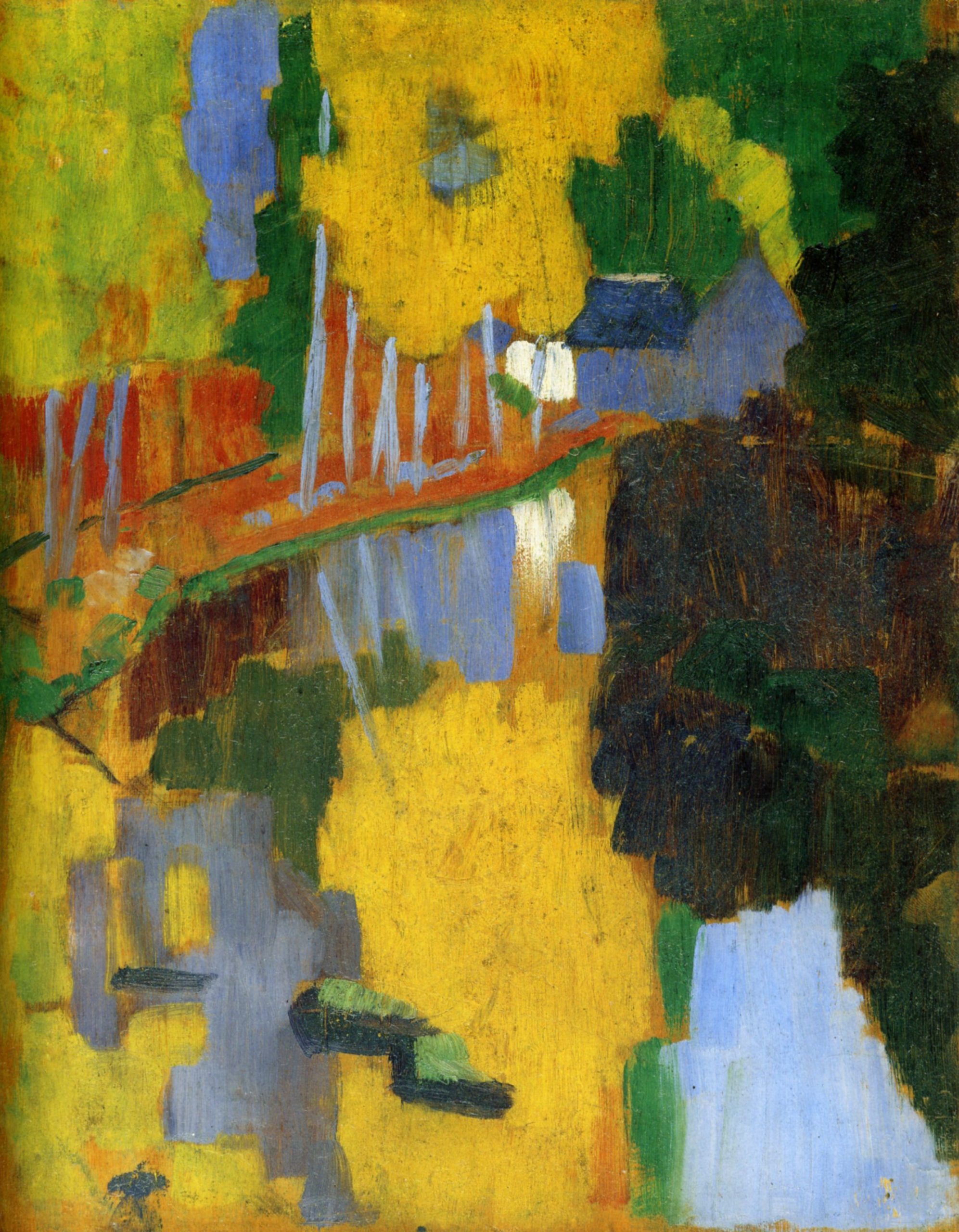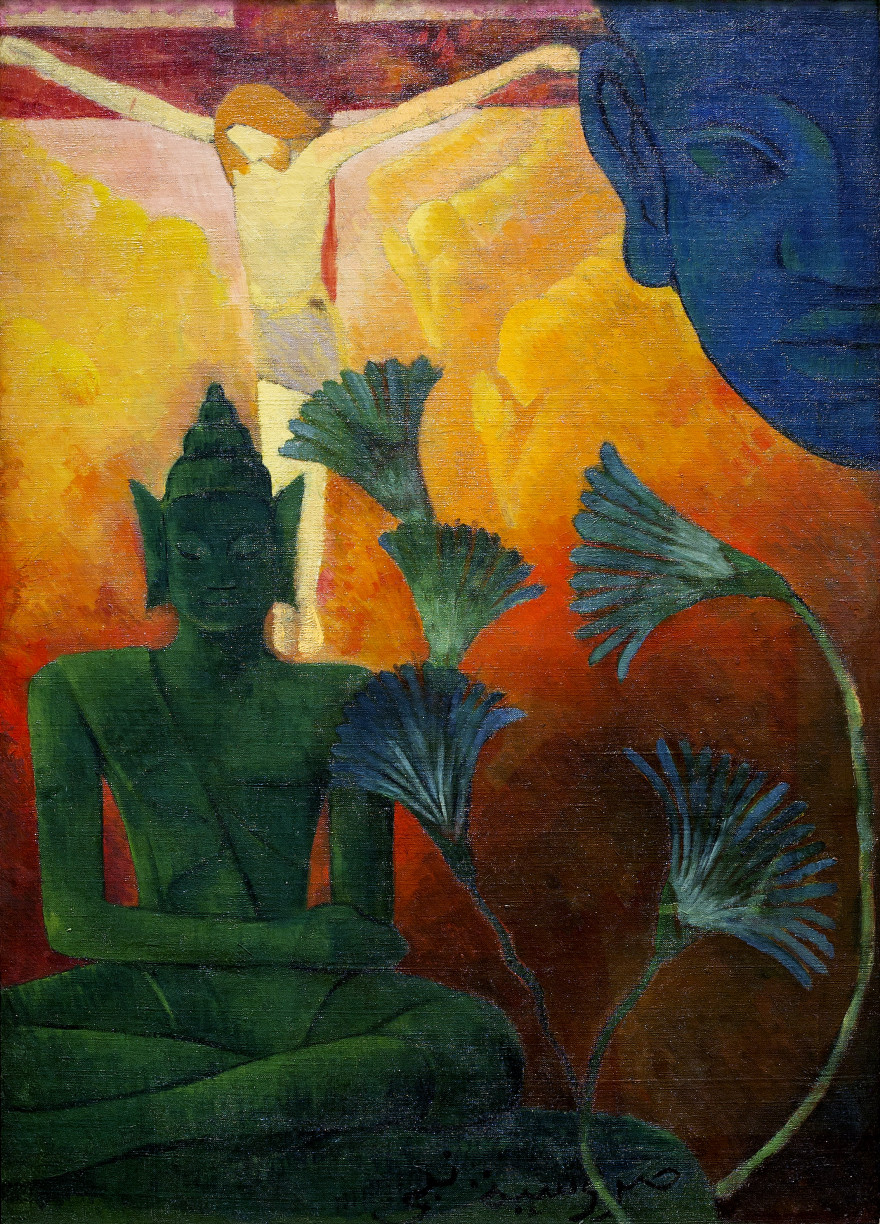In the fall of 1888 Paul Sérusier spent an afternoon with Paul Gauguin in Brittany painting a small landscape on a cigar box lid. He followed Gauguin’s instructions to emphasize the colors he saw by using paint directly from the tube with little or no mixing. The result was a patchwork design of vivid colors only vaguely suggestive of its subject, trees on a riverbank.
Later in Paris Sérusier showed the landscape to fellow art students at the Académie Julian who saw it as an artistic revelation. They named the painting “The Talisman” and formed a group called the Nabis, after the Hebrew word for prophet. In addition to Sérusier the group included Pierre Bonnard, Édouard Vuillard, Maurice Denis, Paul Ranson, and Ker-Xavier Roussel, as well as others. In the 1890s the Nabis were one of the most innovative Post-Impressionist groups working in Paris.
Spiritual concerns

Paul Sérusier, Portrait of Paul Ranson in Nabi costume, 1890, oil on canvas, 61 x 46.5 cm (Musée d’Orsay)
Like Gauguin and many other artists of the period, the Nabis were engaged with the spiritual and mystical concerns associated with fin-de-siècle Symbolism. Sérusier’s Portrait of Paul Ranson in Nabi Costume documents their early interest in esoterica and occult ceremonies. The simplified style Sérusier used derived from Gauguin’s Synthetism but was only one of the styles associated with Symbolism. It forms a marked contrast to the academic naturalism used by many fin-de-siècle Symbolist painters such as Jean Delville, who depicted the Symbolist writer Joséphin Péladan in robes and accompanied by ceremonial objects and symbols, much as Sérusier portrayed Paul Ranson.
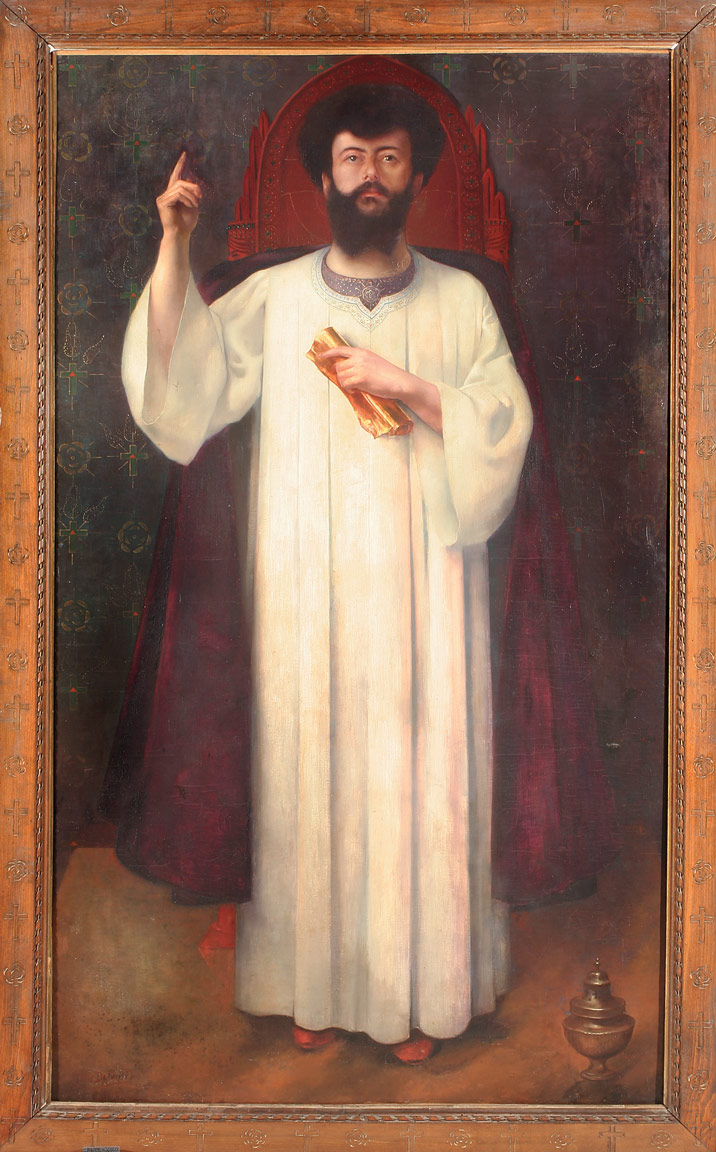
Jean Delville, Portrait of the Grand Master of the Rosicrucians in Choir Dress, 1895, oil on canvas (Musée des Beaux Arts, Nîmes)
A widespread attitude
Symbolism began as a literary movement with the 1886 publication of Jean Moréas’ Symbolist manifesto in the Paris newspaper Le Figaro. It quickly became a kind of catch-all term for a widespread fin-de-siècle aesthetic attitude that embraced the spiritual significance of art while rejecting science and objectivity. Symbolist artists favored idealism over realism, suggestion over specificity, and subjective expression over objective representation. They employed a variety of styles and approaches, including both traditional naturalism and modern techniques associated with Post-Impressionism. Many of the painters who exhibited at the popular Symbolist Salon of the Rose + Cross organized by Péladan in the 1890s favored a highly-detailed naturalism. These included Delville and Fernand Khnopff, whose dream-like images became prominent examples of Symbolist art.
Conveying meaning through color and design
Nabi painters used the modern Synthetist style of Gauguin, which emphasized abstract form, to convey spiritual meaning as well as a means of suggestion and personal expression. Maurice Denis was the most prominent art theorist associated with the Nabis, and one of his early statements became a famous touchstone of formalist modernism: “A painting — before being a battle horse, a nude woman, or some anecdote — is essentially a flat surface covered with colors arranged in a certain order.”[1] Emphasis on color and surface design is a primary characteristic of Nabi painting, which conveys emotion and meaning through abstract formal relations.
In Denis’ Climbing to Calvary the simple dark shapes of black-robed nuns rise diagonally towards a large cross carried by a barely-defined red Christ. One nun reaches out to embrace Christ at the top of the hill, and a strip of bright sky tops off the scene. The basic forms convey the combination of mourning and hope that Christians associate with Christ’s death and resurrection. The scene is timeless, containing elements of the present (the nuns) and the past (Mary embracing Christ on the way to the Crucifixion, the dark silhouette of a crowd of Roman soldiers over the hill). The figure of Christ suggests both the nuns’ spiritual vision of Christ carrying the cross, similar to Gauguin’s Vision after the Sermon, and a Good Friday procession re-enacting the Crucifixion.
Different approaches
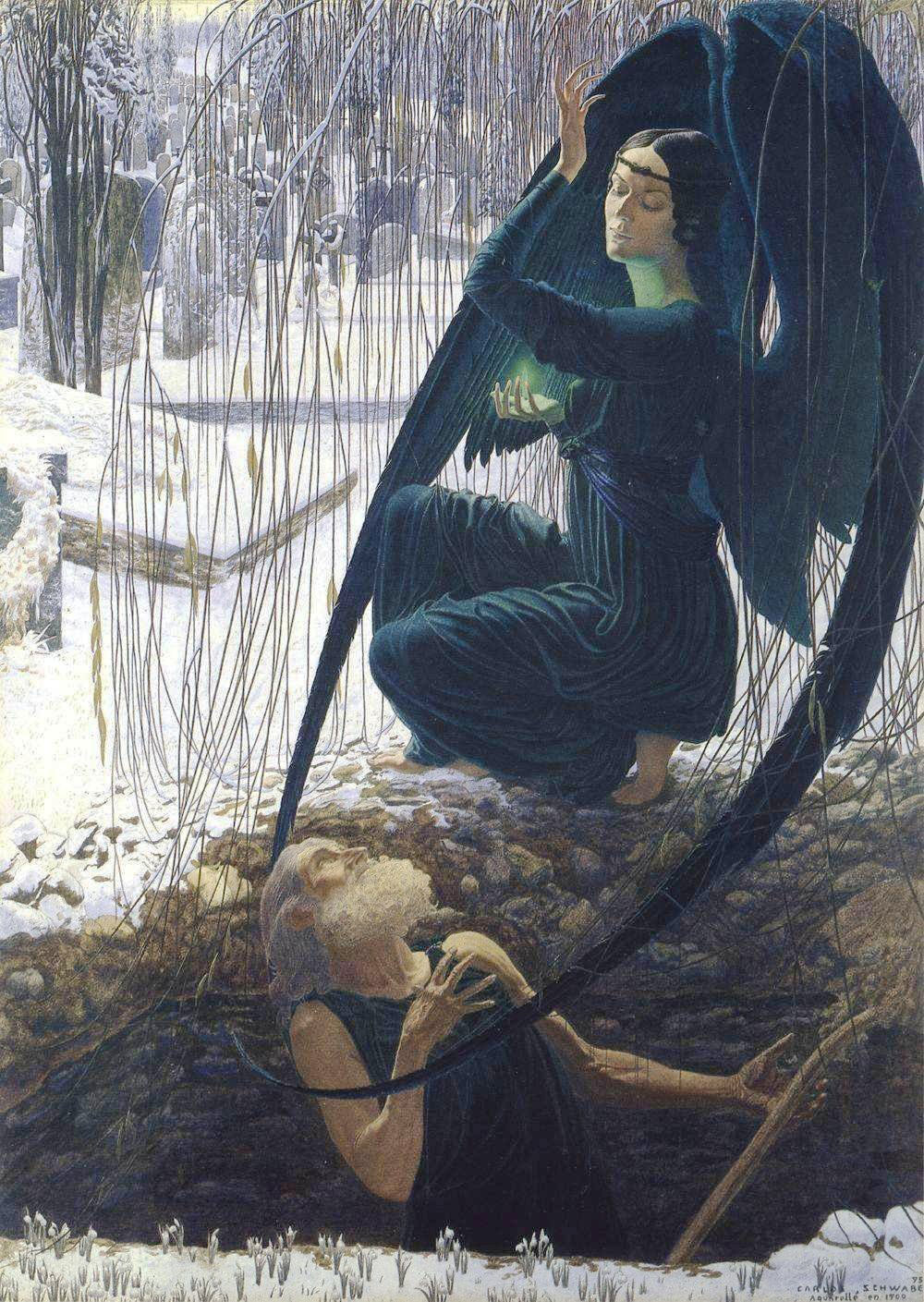
Carlos Schwabe, Death and the Gravedigger, c. 1895, watercolor and gouache on paper, 75 x 55.5 cm (Musée d’Orsay, Paris)
A comparison of Denis’ painting with Carlos Schwabe’s Death and the Gravedigger shows two very different approaches to Symbolist painting. In Denis’ work, the forms are reduced and simplified to mostly flat color areas. Basic symbols, shapes and their relationships convey meaning: the Christian cross, black for mourning, red for the blood of sacrifice, the upward movement towards light and resurrection.
Schwabe uses similar compositional devices to convey the theme of death and resurrection; both paintings show darkness and symbolic death at the bottom of the painting, light and resurrection rise above. Unlike Denis, however, Schwabe employs a traditional naturalistic technique that records many details based on careful observation. The figures and location are so specific that they suggest the illustration of a particular scene in a story. Denis by contrast depicts a more generalized, anonymous image of death and Christian resurrection.
Symbolism without symbols
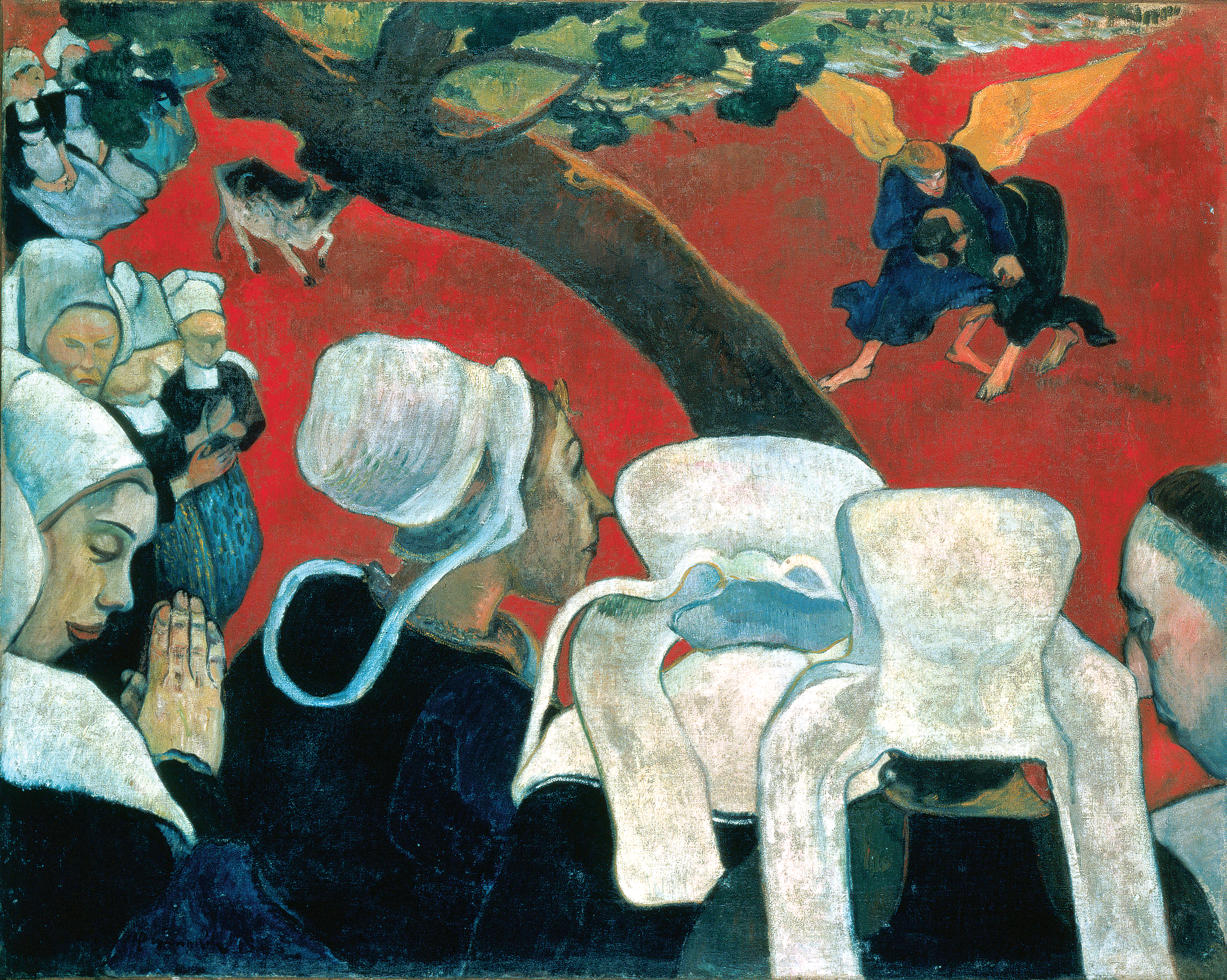
Paul Gauguin, Vision after the Sermon, 1888, oil on canvas, 72.2 x 91 cm (National Galleries of Scotland, Edinburgh)
Symbolism is perhaps easiest to recognize in artworks that present known symbols, such as the Christian cross, or overtly symbolic meanings through recognizable themes such as youth, old age, love, death, etc. In addition to Denis’ Climbing to Calvary, many well-known Post-Impressionist works use conventional symbolism in this way, including Gauguin’s Vision after the Sermon. Symbolism was also, however, associated with both a conception of art as subjective expression and the capacity of art to suggest profound meanings indirectly. As a result, many artworks that lack obvious symbols or clear symbolic significance are also associated with Symbolism.
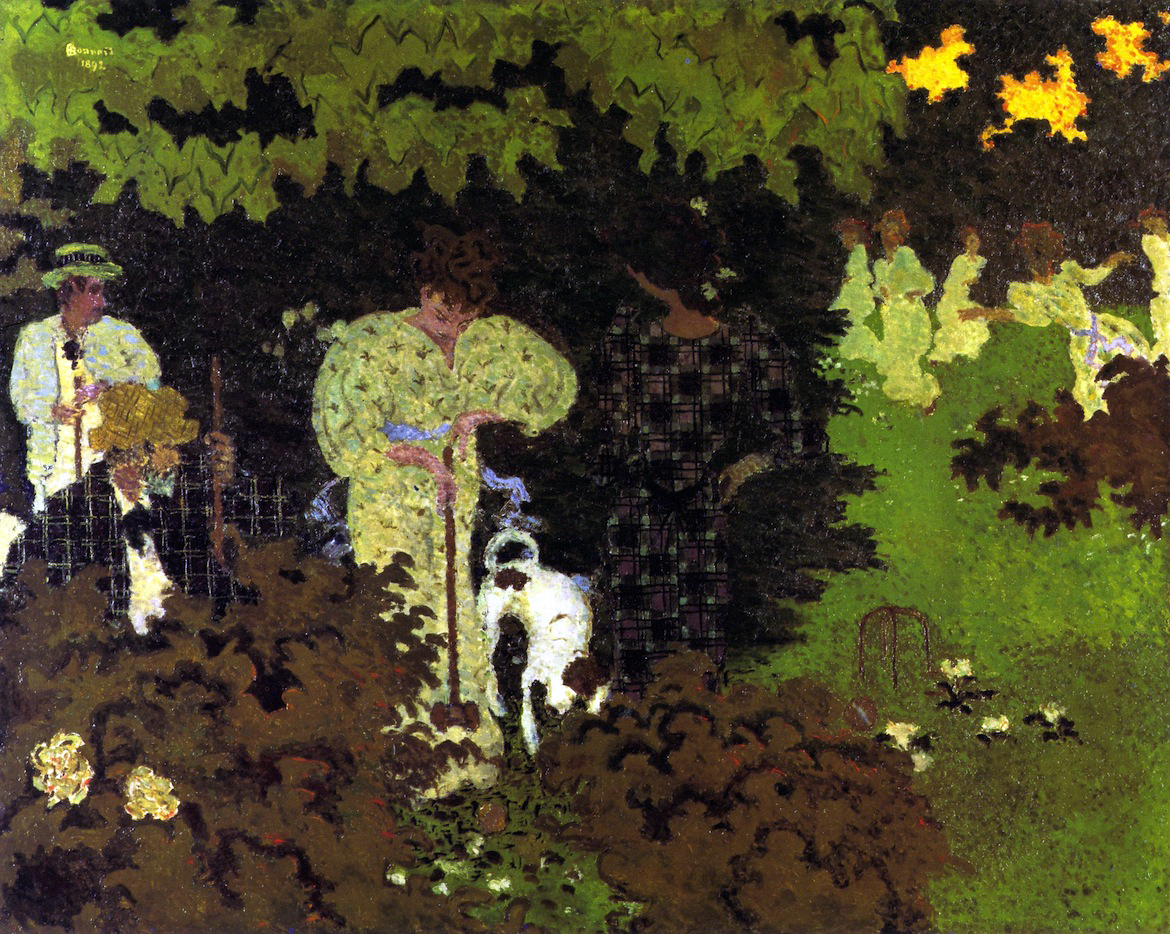
Pierre Bonnard, Twilight (Game of Croquet), 1892, oil on canvas, 130 x 162.5 cm (Musée d’Orsay, Paris)
Pierre Bonnard was one of the founding members of the Nabi group. His painting Twilight (Game of Croquet) depicts men and women playing croquet surrounded by richly varied foliage. In the distance, women in long white dresses dance on the grass. The style is typical of Nabi painting with its flat simplified forms and emphasis on surface design. The leaves of the various plants, the printed fabrics of the women’s dresses, the man’s plaid jacket, and the dog’s white and brown fur create a decorative surface of multiple textures and patterns.
A Symbolist mood
Although Twilight depicts an ordinary leisure activity (a typical subject of Impressionist painting), the mood is melancholy and dream-like, in keeping with Symbolist attitudes. The foreground figures are introspective and almost lost in the foliage, while the women in the background are otherworldly white figures dancing in the dusky light. The mysterious dream-like quality is typical of much Symbolist painting regardless of its style.
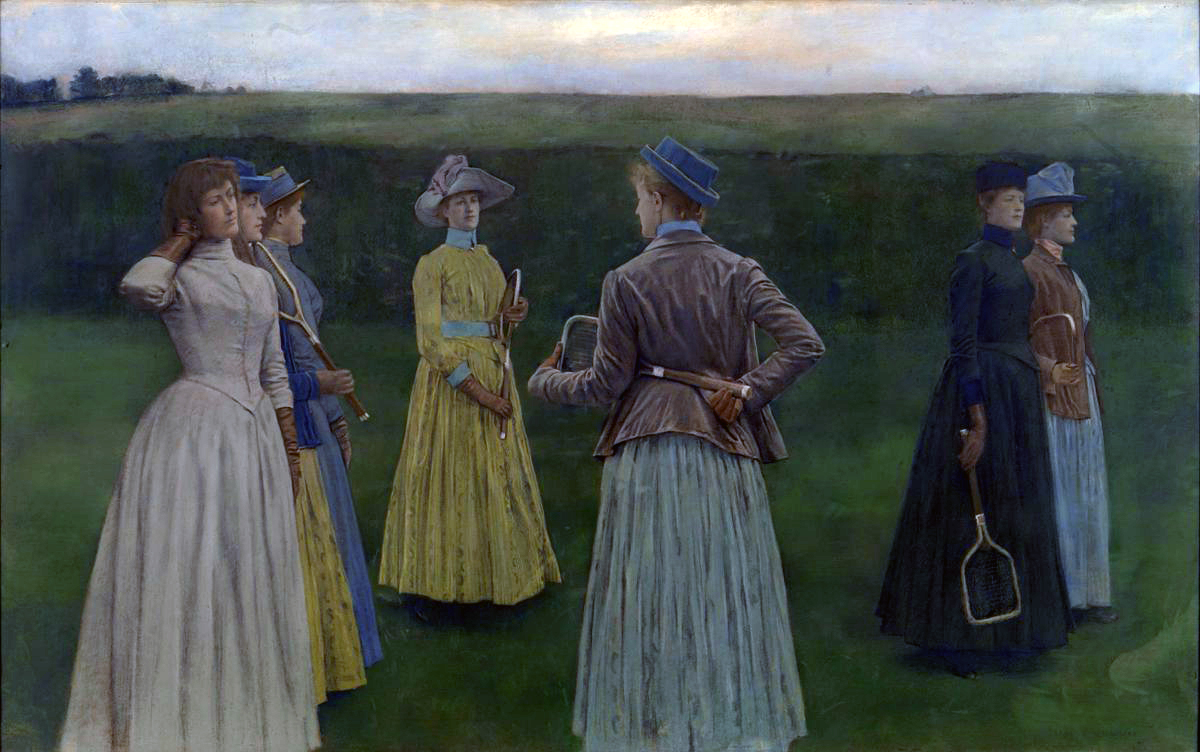
Fernand Khnopff, Memories (Lawn Tennis), 1889, pastel on paper mounted on canvas, 127 x 200 cm (Musées Royaux des Beaux-Arts de Belgique, Brussels)
A comparable Symbolist work in a more traditional naturalistic style is Fernand Khnopff’s Memories, in which several women holding racquets stand on a lawn seemingly lost in thought. Both Bonnard and Khnopff turn an ordinary modern subject into an image that suggests greater depth and significance without specifying any particular meaning.
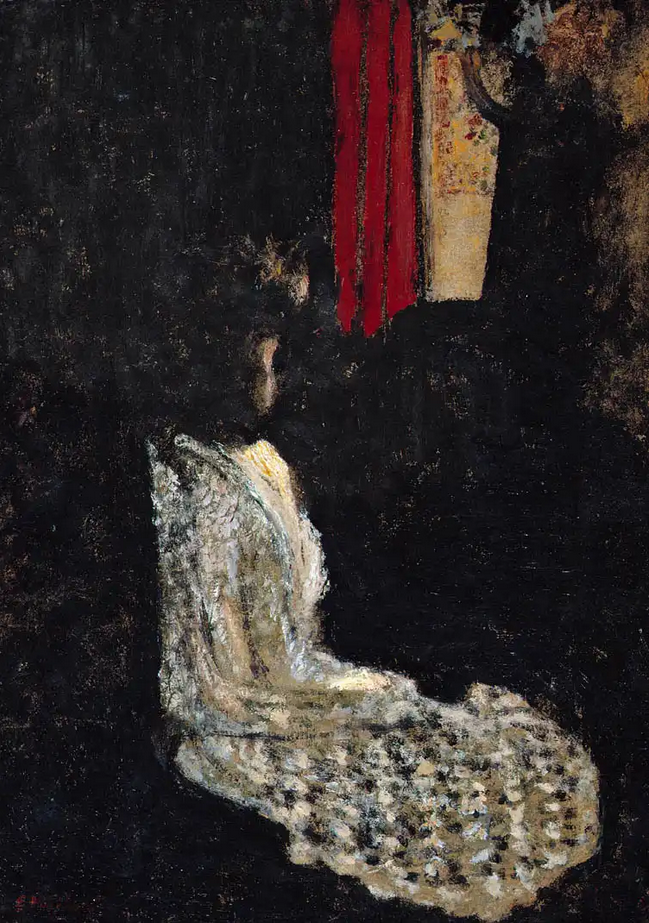
Édouard Vuillard, Seated Woman in a Dark Room, c. 1895, oil on cardboard mounted on panel, 36.7 x 26.3 cm (Montreal Museum of Fine Arts)
The subjects of Nabi paintings varied from the overt, often religious, symbolism of Maurice Denis to scenes of contemporary urban and suburban life depicted by Pierre Bonnard and Édouard Vuillard. Whatever their subject, though, the Nabis relied on the formal qualities of color, pattern, and surface design to enhance the dreamy moods and profound meanings of Symbolist art. Their emphasis on the capacity of formal elements to convey meaning and emotion was an early contribution to the developments that led to abstract art.

